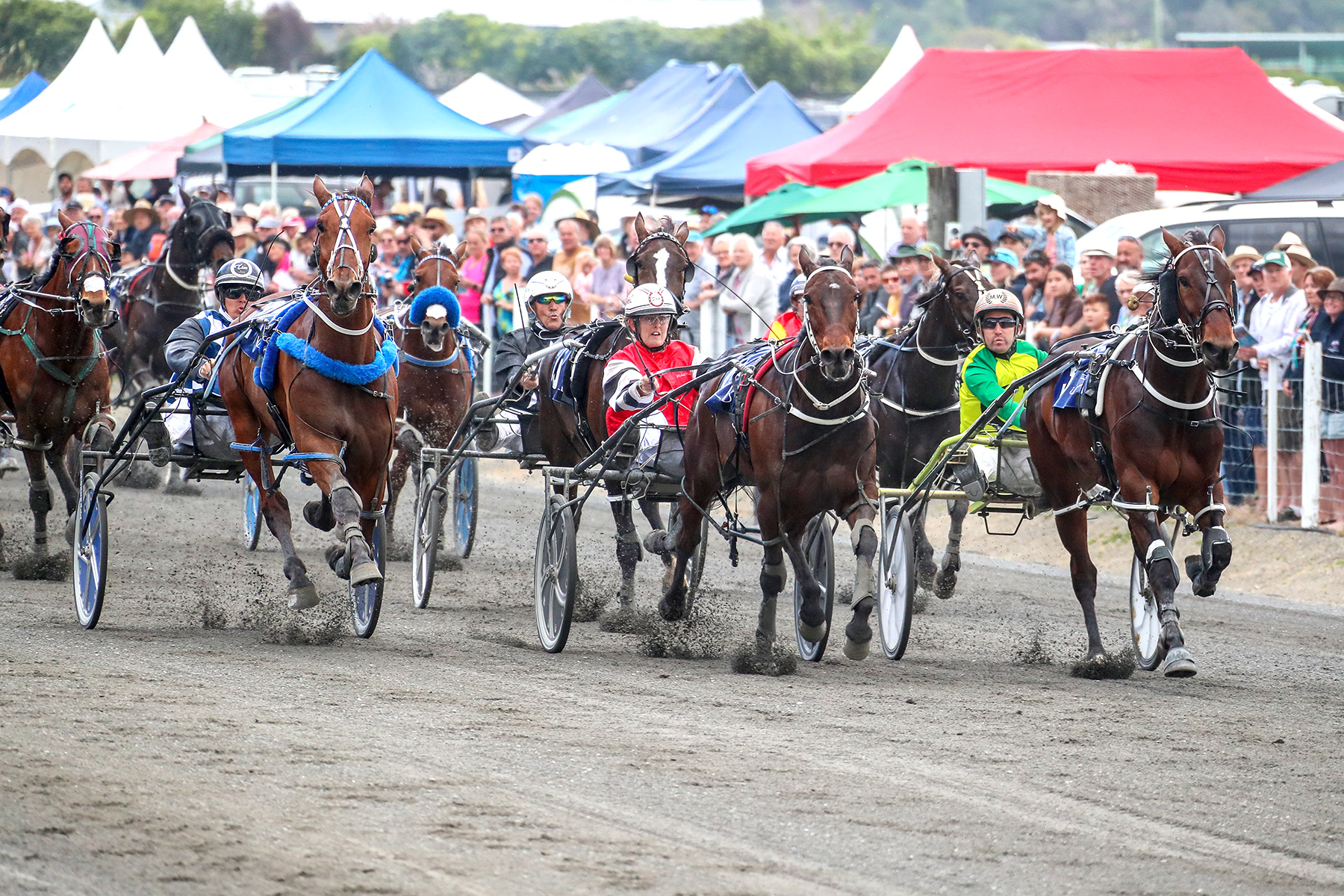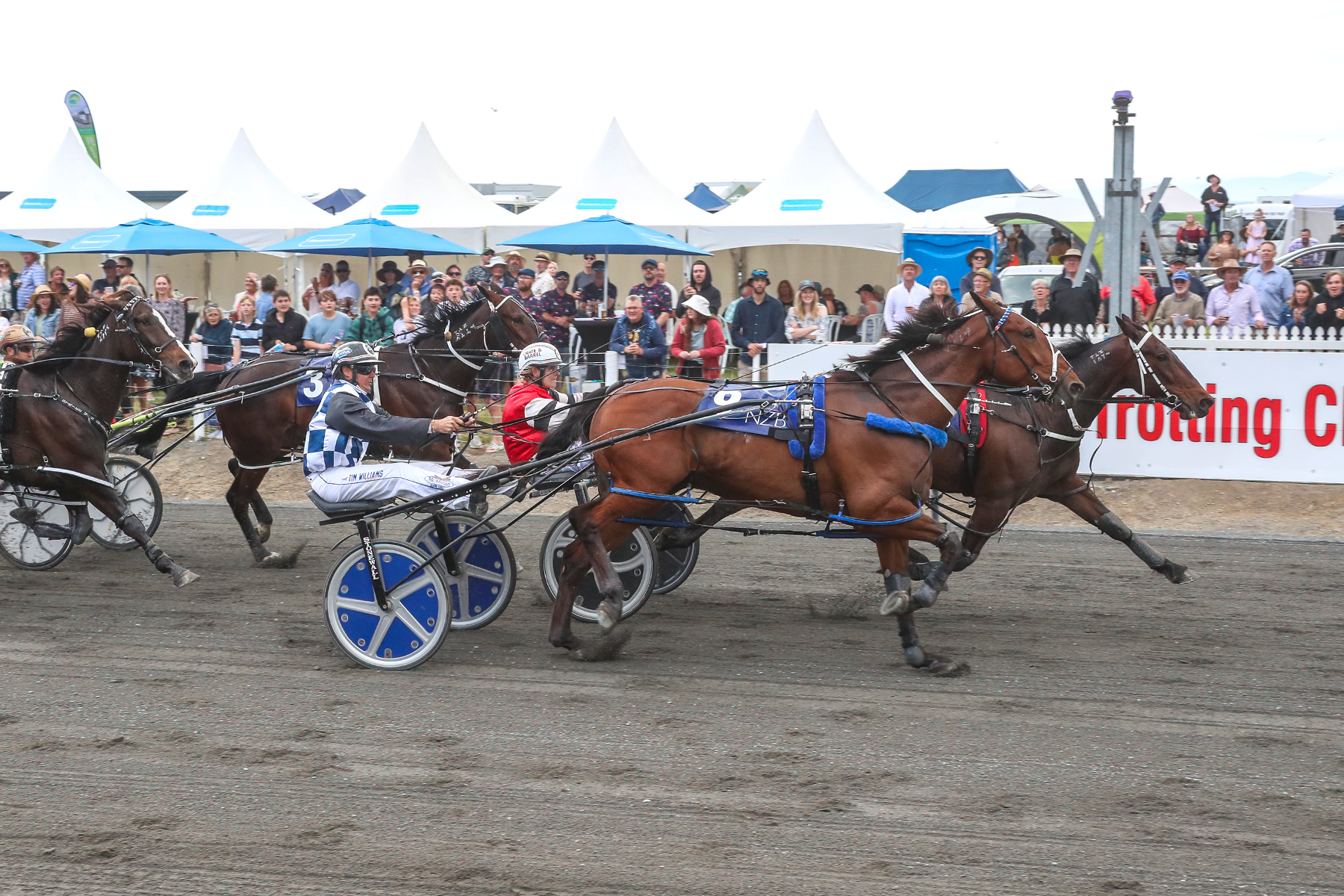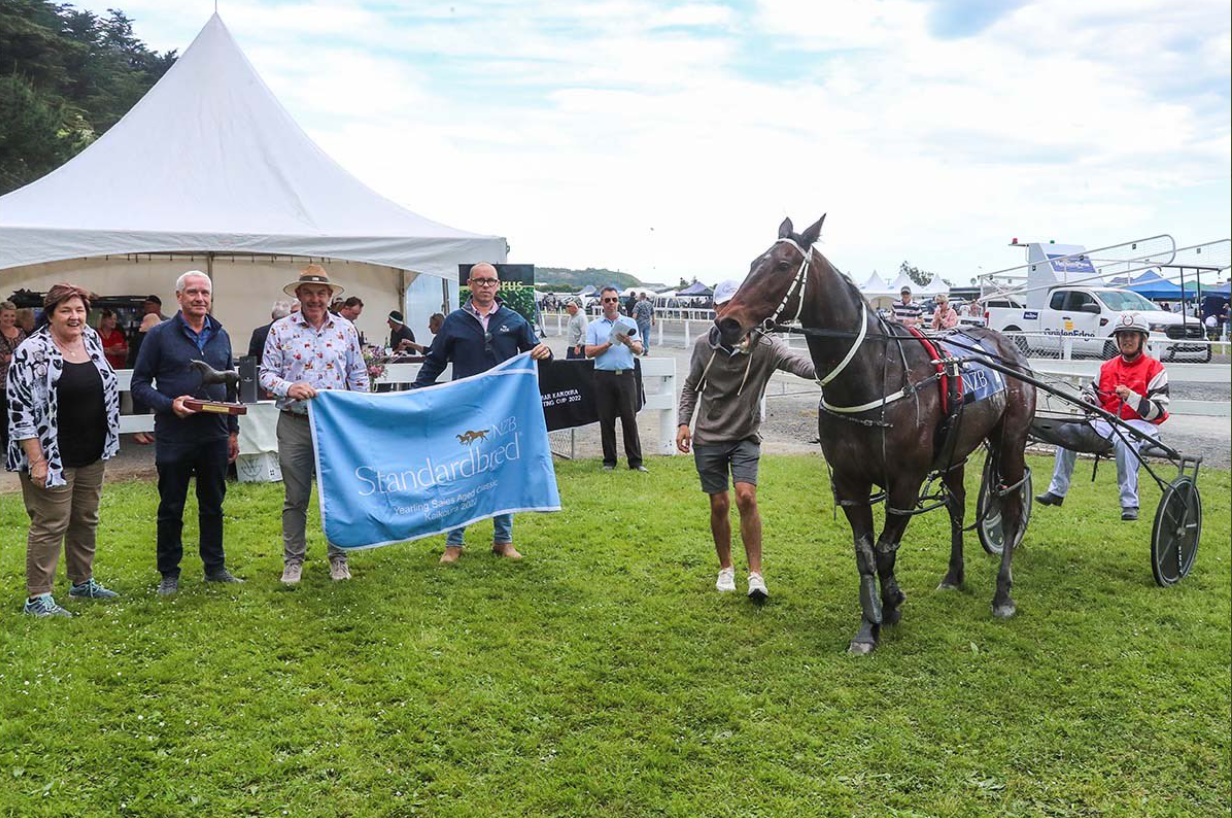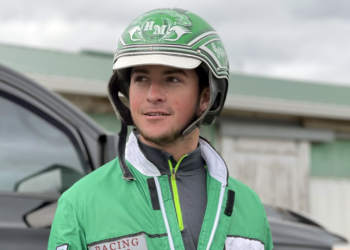One of the surprise results from the Kaikoura Trotting Club’s marquee weekend of harness racing was the upset win of Warloch (Well Said) in the $50,000 Listed NZB Yearling Sales Series Aged Classic.
At start number 27 for the season, the Michael House-trained eight-year-old pacer picked up his second win of the season.
And while that might sound surprising to the casual harness enthusiast, a pacer having his 110th-lifetime start against New Zealand Cup nominees and rising stars of the track, it should be anything but.
Warloch is a warhorse who has spent the majority of his career as an aged pacer racing in the shadows of the Open Class stars. He might not be a household name, but the industry could do with a few more like him.
Warloch fits the Michael House model of training to a tee. Traveling up and down the country while moving up and down the ratings bands in pursuit of a favourable race.

House’s knowledge of the ratings band is second to none, and few play the system better than he does. It’s not to suggest any skullduggery.
Few if any in his barn at present are stars, however if managed well, House has provided the blueprint for maximising an individual’s earning potential. It’s as much of a passion as it his business model and requires a strong sense of what each horse needs in work as well as from the programmes.
It has seen House well-travelled in recent years with local programming not always favourable, and Warloch is a perfect example having raced at 15 different tracks around the country whilst being driven by 23 different reinsmen and woman.
“I feel confident I can put anyone on him, and he will still try. I can put the village idiot on him, and he will go a good race. Heck, even I’ve driven him,” laughed House.
“Sam (Ottley) won with him one day at Invercargill and it was a ballsy drive because it was a five or six horse field with Sand Wave and she just run them along and pulled trigger and went. I haven’t forgotten that race and that’s why I put her on Warloch, I actually switched her over because she was down to drive Johnny Mac,” he said.

Warloch came into Monday’s Aged Classic with just one placing from his prior 16 starts.
On the surface his form was poor, and that was reflected in his starting quote of $68 on the tote.
But dig a little deeper and there is more than meets the eye. Week in and week out, Warloch has taken on some of the best aged pacers in the rating bands and for the last six months in particular, in deep Metro fields at Addington Raceway where there is nowhere to hide.
“I have to give credit to Steven Reid because he taught me how to train him. He’s travelled the length of the country and really suits us and what we do. If we’re gunna race him in a fortnight he just has a wee canter and does no fast work as such.
“He’s been getting back off the gate and doesn’t look like he’s been going all that good but if you go back and look at stride master, he’s actually been smashing the clock,” said House.
WARLOCH REPLAY
Despite his longevity, Warloch’s story from sales purchase to Listed Sales Series winner could have easily been void of a few chapters if not for some luck and twists of fate.
He was a $42,500 yearling sales purchase back in 2015 at the National Sale in Karaka out of the Highfield Bloodstcok draft of Chris and Tina Barlow. House recalls the journey well.
“To me, the yearling sales is always a roller coaster ride. It was at a point where Bettor’s Delight were starting to take off, and I had been on the journey from Highview Tommy through to that point. But as the prices get out, we all start looking at the next big thing and evaluating who we think that might be.
“On type, Warloch was the best of the Well Saids that year in that crop. I thought he was a really nice $25,000 to $30,000 horse, and I probably overpaid at the time, well and truly, but he was a nice horse. He was well bred; the dam had done a great job and it was a great family.
“I bought him to syndicate and sell on and what happened with him was he was quite colty and he didn’t function very well as a young horse. Especially around a group of other colts. It got to the point where he was actually a danger to himself, so we gelded him and carried on. Time had gone by, and we got him in and qualified him and he won not long after his career kicked off.
“He was under offer for big money, but he failed the vet and we found two fractures in each of his hocks and from memory it was the inside bottom joint. Thinking back, I didn’t really correlate that these two lumps that had appeared on the inside of his hocks as anything being wrong with him being a vigorous and active colt, but somewhere along he had suffered these two fractures. At that point of time, they had been there a long time and they were unresolved, full of gristle and were never ever going to heal.
“The prognosis from our veterinary team was poor but knowing he was a nice horse I thought we had to sort it. I talked to our surgeon expert Dr Guy Alexander and Dr Lindsay Colwell at length about it. We whipped off to Mitre 10, bought some drill bits and drilled through those fractures in the operating room to create new fractures in his hocks. It made them clean fractures, and then they stabilized the hocks with the big Robert jones bandages on.
“We put him in casts and put him in a box for four months, and he came out as good as gold. It was a great result because our veterinary team were very guarded about his prospects after the procedure, but since that whole episode Lindsay was saying last night, she has hardly had to lay a finger on him since. She lives 100m away from him and only ever sees him racing these days.
“This horse, everyone he touches has such an immediate impact on them because he is such a kind horse. He became such a gentleman through the process,” he said.
The procedure saw Warloch on the sidelines for 14 months, but since then has gone on to race a further 104 times across the last four seasons. 83 of those starts including his Kaikoura triumph may not have happened had it not been for the global pandemic.
“I always knew this horse would be a fantastic horse in America and I genuinely believe he could have won half a million dollars in North America. He is the sort of horse that will cop the 28 and 27 quarters and back up the next week. I had arranged for him to go on a deal in 2020, and Covid hit. Warloch is still in this country because of the pandemic,” he said.
House can talk for hours about the problems he sees in everyday programming. And unlike a lot of participants, he is prepared to put the hard yards in to provide possible solutions. While some are radical, it shouldn’t detract from the brilliant mind of a man who has experienced the industry from almost every perspective. While the following excerpt is only a minute sample of a broader issue, whether you agree with it or not, it’s a refreshing take on a problem that resides in our racing.
“The minute Blair (Orange) pulled out on Tommy Waterhouse out and took the favourite on I was thinking, you beauty! Warloch loves it when the speed is on and can run the times when the races are genuinely run. The establishment has allowed too many of our races to become just a walk and sprint home.
“One of the biggest reasons for that is that many of the drivers go out there either by instruction or their own knowledge that they don’t have a chance due to the wide points spread, and there is another race meeting coming up. So why pull out when you have a low rating horse in with high rating horses? Everyone thought they had a chance in that race yesterday. It was a decent race for decent money and the horses were of a like despite being at different stages of their careers. The more of those races, you get these different results,” he said.

Channeling the energy, passion and enthusiasm is easier said than done and House would readily admit his communication style can at times be misconstrued.
We’ve had our share of run ins whilst working on the racing calendar last year. A personal favourite was when Michael walked into my office at the NZSBA and told me every cent they had spent on my employment was wasted. I took it personally. But upon reflection, despite his message not being the best articulated at the time, he wasn’t wrong. Money needed to be invested into initiatives, not just human resources. At long last, that is happening.
Hard truths can be hard to accept, particularly as an administrator in the sport. I’ve seen numerous examples of brilliant minds in the sport be ostracized for a different line of thinking and challenging the status quo. Individuals feel threatened and choose to play the man and not the ball so to speak, and we as an industry are poorer for it.
Michael has chosen not to share his thoughts around programming on a more public scale despite numerous requests, however I think we might have had some success and in coming weeks look forward to hopefully starting a positive discussion around the issues we currently face.
It’s easy to sit back and suggest that ratings band programming is at the core of his business in an attempt to undermine the logic. However, the overwhelming majority of our participants and horse population are in the same demographic. Few can argue their importance to the sport. Warloch is a perfect example of the importance of catering to the everyday horse and what they can provide to the overall racing product.
“I took a lot of pleasure out of Monday with Warloch, I have an affinity with Kaikoura, and I think anyone does who’s a horse racing aficionado. I’ve won that race a couple of times and I normally do target that meeting a wee bit.
“His long-term plan is he will be up in Auckland and by the 15th of November, I reckon I will increase the North Island racing population by close to 10% and have a team centered around a bunch of late two-year-olds and look forward to getting up there,” he said.
For complete Kaikoura results, click here.
by Brad Reid, for Harnesslink

 USA
USA Canada
Canada Australia
Australia New Zealand
New Zealand Europe
Europe UK / IRE
UK / IRE



